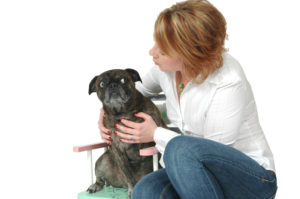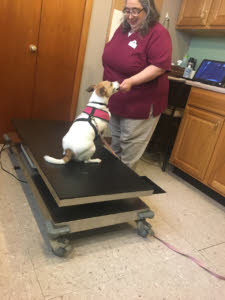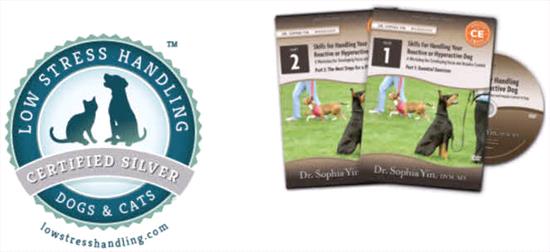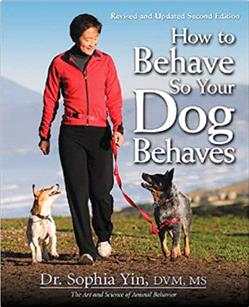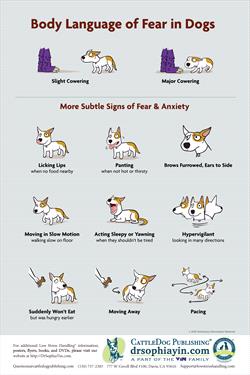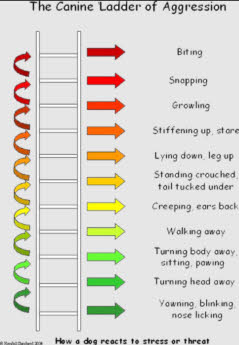With so many different training resources available throughout the world today, it can be quite overwhelming when deciding which program will best fit the lifestyle of you and your pet. And, like with most things in life, there is no one-size-fits-all when it comes to training a pet. Most will find that using techniques from various resources provides the best results. However, the one thing that is not commonly expressed, is the need to look at ourselves first. What are we doing that is influencing the pet we are trying to train? In this article, we will discuss the importance of training ourselves, before we can successfully train our pets.
Paying attention to our own body language is extremely important when training our animal companions. They learn by observing our body language, even more so than learning verbal commands. They are always watching and responding to the way we are moving and posturing ourselves. These movements of the body reflect what we are thinking and feeling and animals have the ability to pick up on all of these nonverbal types of communication.
As a veterinary technician & a dog trainer, I (Debbie) spend the first part of any training session talking with the owner to let them know what to expect out of my class. This is done so they understand that I am training not only their dog but to a large extent, them as well. Dogs read so much of our body language they can easily know what we are going to do before we do it. Knowing this, we can take away that we need to be thoughtful of how we move and hold our bodies with them.
I (Debbie) learned so much about reading body language from the Low Stress Handling Certification course and from carefully watching the Reactive Dog Part 1 & Part 2 DVDs . Knowing the body language of dogs helps to keep people safe, to know when they are anxious, and much more.
The pace you walk in, how you hold your body, your tone of voice all matter. For example, if you are walking aimlessly, looking at the sky, your phone, etc., why would your dog want to keep moving? He may even just pull you along the way. When walking your dog for exercise, walk with a purpose, think of a good old John Phillip Sousa March and go! Walking this way shows you know what you want to do and where you want to go & your dog will go with you much more willingly.
Have you ever picked up your dog’s leash, or even just look at it, and your dog becomes excited because he thinks he is going for a walk? He was able to make this association simply by observing your movements! The same concept applies when teaching your dog to walk on a leash. The way that you hold the leash and the speed that you are walking are just two examples of key elements of body positioning during the training. A wonderful resource about how we are always speaking to our dogs through our body language is the book, “How to Behave So Your Dog Behaves,” by Dr. Sophia Yin. It really enlightened me on just how much my canine children relied on my signals (intended or not) to know what was going on around them.
As pet parents, we also need to train ourselves how to observe the body language our fur babies. Again, this is how they communicate to us, what they want/need, or how they are feeling. A dog that is pacing around the backdoor may be expressing his need to go outside, or a dog that is sitting by his food bowl may be expressing that he would like some food. Some behaviors are not as easily identifiable. Dogs that are fearful and/or stressed can become aggressive and even bite. Do you know how to tell if your dog is afraid or stressed? Some great resources on cat and dog body language can be found here.
If your dog suddenly begins to growl, some questions to ask yourself are: what is happening in the environment around him that could have triggered this reaction? What are things that you can do to relieve this fear or stress? What are the physical signs that he is showing me? Knowing the signs and signals that your pet is communicating to you is so incredibly important in giving them a safe, loving, and stress-free life. Know these signals like the back of your hand, so that you are able to handle any situation as they come up. A dog that is suddenly becoming more and more agitated may be indicating that he is in pain, or not feeling well, and may warrant a trip to the vet. While a dog that is wagging his tail, taking treats with ears forward can indicate that your dog is happy and feeling secure.
How many of you have taken your dog to the dog park for some socialization and exercise? Many of us have, as this can be a wonderful experience, and most dogs absolutely love the opportunity to run and play with their canine friends! However, sometimes things don’t always go as smoothly, and unfortunately most problems that occur at the dog park can be avoided simply by paying attention to your dog’s (and other dogs) body language. Here is an example of what I mean:
Year’s ago, when I (Traci) first moved to Illinois, my husband and I used to take our two dogs a large local dog park. This park was beautiful, lots of trees, some high grass to run through, water fountains, and it was about 5 acres of space for them to run around! I quickly noticed that probably due to the size of the park, that often, people would bring their dogs and allow them to run free while they walked in groups along the edge of the park. They would be walking and talking, and not really paying much attention to their dogs, who may be across the park getting a little over stimulated at a new dog that just entered the park. This quickly turns into a dog fight, or a person getting bitten as they try to break up a bunch of dogs, that though initially and usually are quite friendly, just have become over stimulated, which turned into anxiety/fear/aggression. I don’t know how to stress the importance of always paying attention to what your dog’s body language is telling you, and in this case – just paying attention to your dog. It is you that prevent a disaster from happening. Never assume that just because your dog has never bitten anyone, that he won’t if it was in certain circumstances.
Train yourself first, in learning what your body language is communicating to your pets and also what their body language is telling you. This is truly one of the most important things that you can do for your pet. If you ever are unsure of what some behavior means, please reach out to your veterinarian for guidance. As said, animals can become aggressive if they are unwell, or in pain. Therefore, the vet can do a thorough exam to help you determine the cause of the behavior. Always keep the lines of communication open between your and the vet regarding any behavior you observe. Your veterinarian is there to help you help your pet in the best way possible.
For more information and resources about behavior and body language please go to Low Stress Handling® Resources from CattleDog Publishing.


